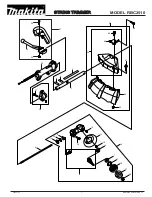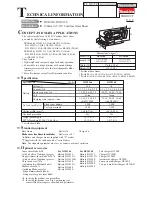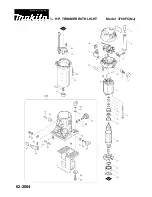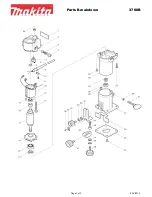
59
GB
Cutting Techniques
• Cut thick branches beforehand using
a branch clippers.
• The double-sided cutter bar enables cut-
ting in both directions or, with a swinging
action, from one side to the other.
• In case of vertical cutting, move the
hedge trimmer uniformly forward or
up and down in an arc movement.
• In case of horizontal cutting, move
the hedge trimmer in a sickle-shaped
movement to the edge of the hedge,
so that cut branches fall to the ground.
• In order to achieve long straight lines,
the placing of tensioned guiding cords
is recommended.
Cutting Shaped Hedges:
It is recommended that hedges
be cut in a trapezoidal shape, in
order to prevent stripping off of the
lower branches. This corresponds
to the natural plant growth and al-
lows the hedge to thrive optimally.
During cutting, only the new an-
nual growths are reduced and thus
a dense branching and a good
screen will develop.
1. Cut the sides of a hedge first. To do
this, move the hedge trimmer in the
direction of growth from bottom to
top. If you cut down from the top, the
thinner branches will move out, which
may result in some areas having
sparse growth or holes.
2. Cut the top edge, according to taste, in a
flat shape, roof shape or rounded shape
3. Trim young plants to the required
shape. The main growth should re-
main undamaged until the hedge has
reached the planned height. All other
shoots are lopped off to half size.
Care of Free-Growing Hedges:
Free-growing hedges are not shaped
when cut, although they must be regularly
maintained so the hedge does not be-
come too high.
Maintenance/Cleaning
Repair and servicing work not
described in this manual should
always be carried by our Service
Centre. Use only original parts.
Do not use any cleaning agents or
solvents. These could cause irrep-
arable damage to the equipment.
Chemical substances can attack
the plastic parts of the equipment.
Turn off the appliance and, before
doing any servicing, remove the
battery.
Wear gloves while handling the
blades.
Carry out the following maintenance and
cleaning work regularly. This will guaran-
tee a long and reliable service life.
• Before each use, check the hedge
trimmer for obvious defects such as
loose, worn or damaged parts. Check
the secure seating of the bolts in the
cutter bar.
• Check coverings and safety devices
for damage and correct seating. Re-
place these where necessary.
• Keep the ventilation slots (
3) and
motor housing (cutting head) (
2)
of the device clean. Use a damp cloth
or a brush to do this. Do not wash
down the equipment with water, or
submerge it in water.
















































